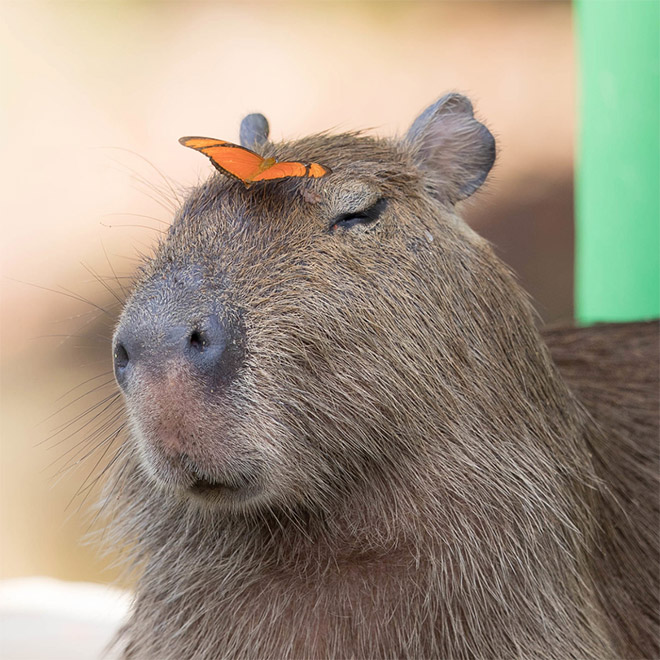
Introduction
When we think about cute animals, capybaras might not immediately come to mind. However, these giant rodents have gained popularity in recent years for their undeniable charm and adorable appearance. Native to South America, capybaras have captured the hearts of people around the world with their friendly nature and unique characteristics.

Physical Features
Capybaras are the largest rodents in the world, with a stocky and compact body. They can grow up to 4 feet in length and weigh around 100 pounds. Their fur is thick and coarse, ranging in color from brown to reddish-brown, which helps them stay warm in their natural habitat.

Adaptations for Aquatic Life
One of the most fascinating aspects of capybaras is their amphibious nature. They are excellent swimmers and have partially webbed feet that aid them in navigating through water bodies. Capybaras can stay submerged for several minutes, using their nostrils located on top of their heads to breathe.

Social Behavior
Capybaras are highly social animals and live in large groups called herds. These herds can consist of up to 100 individuals, creating a sense of community and providing protection against predators. They are known for their friendly and peaceful nature, often interacting with other species such as birds and turtles.

Parental Care
When it comes to parenting, capybaras exhibit remarkable care and devotion. Both males and females actively participate in raising their offspring. After a gestation period of about 150 days, a female capybara gives birth to a litter of around four to eight young ones. These young capybaras, called pups, are precocial and can walk and swim shortly after birth.

Diet and Feeding Habits
As herbivores, capybaras primarily feed on grasses and aquatic plants. Their digestive system is specially adapted to digest tough plant material efficiently. They also practice coprophagy, a behavior where they eat their own feces to extract additional nutrients from their food.

Habitat and Distribution
Capybaras are commonly found in the wetlands, marshes, and densely vegetated areas of South America. They prefer habitats with access to water bodies, such as rivers, ponds, and swamps, as they rely on water for various activities including cooling down their bodies and escaping from predators.

Interaction with Humans
In some regions, capybaras have become accustomed to human presence and have even been domesticated in certain cases. They are sometimes kept as pets or used in therapy programs due to their gentle and calm nature. However, it is important to remember that capybaras are wild animals and require proper care and suitable living conditions.

Conservation Status
Capybaras are listed as a species of least concern by the International Union for Conservation of Nature (IUCN). They have a wide distribution range and are not currently facing any significant threats. However, habitat loss and hunting for their meat and skin still pose some localized risks.

In Conclusion
Capybaras, with their cute and cuddly appearance, have undoubtedly won the hearts of many. Their unique characteristics, social behavior, and adaptability make them fascinating creatures to observe. While they may not be the first animal that comes to mind when thinking of cuteness, capybaras certainly deserve their place among the adorable creatures of the animal kingdom.